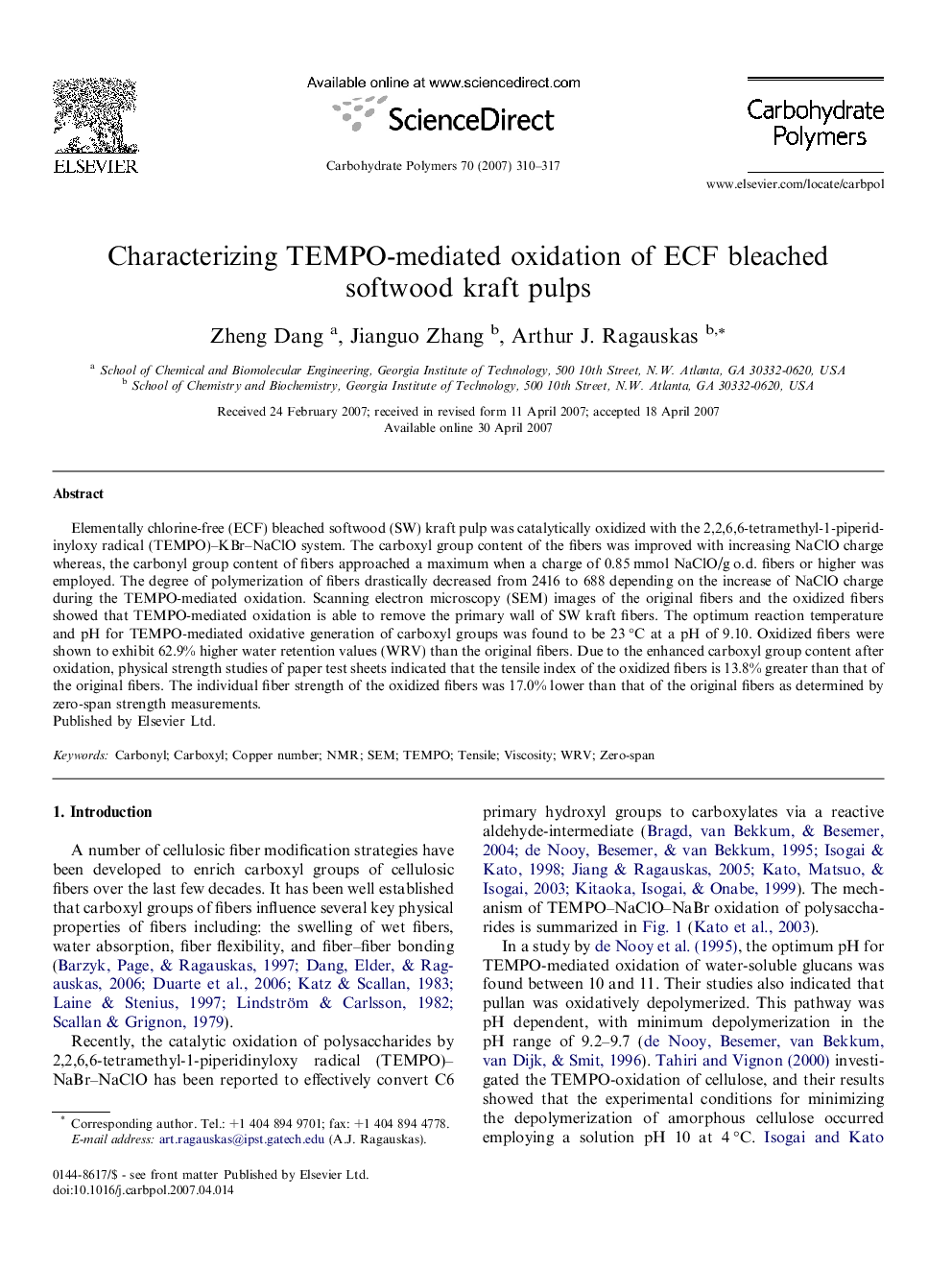| Article ID | Journal | Published Year | Pages | File Type |
|---|---|---|---|---|
| 1386645 | Carbohydrate Polymers | 2007 | 8 Pages |
Elementally chlorine-free (ECF) bleached softwood (SW) kraft pulp was catalytically oxidized with the 2,2,6,6-tetramethyl-1-piperidinyloxy radical (TEMPO)–KBr–NaClO system. The carboxyl group content of the fibers was improved with increasing NaClO charge whereas, the carbonyl group content of fibers approached a maximum when a charge of 0.85 mmol NaClO/g o.d. fibers or higher was employed. The degree of polymerization of fibers drastically decreased from 2416 to 688 depending on the increase of NaClO charge during the TEMPO-mediated oxidation. Scanning electron microscopy (SEM) images of the original fibers and the oxidized fibers showed that TEMPO-mediated oxidation is able to remove the primary wall of SW kraft fibers. The optimum reaction temperature and pH for TEMPO-mediated oxidative generation of carboxyl groups was found to be 23 °C at a pH of 9.10. Oxidized fibers were shown to exhibit 62.9% higher water retention values (WRV) than the original fibers. Due to the enhanced carboxyl group content after oxidation, physical strength studies of paper test sheets indicated that the tensile index of the oxidized fibers is 13.8% greater than that of the original fibers. The individual fiber strength of the oxidized fibers was 17.0% lower than that of the original fibers as determined by zero-span strength measurements.
